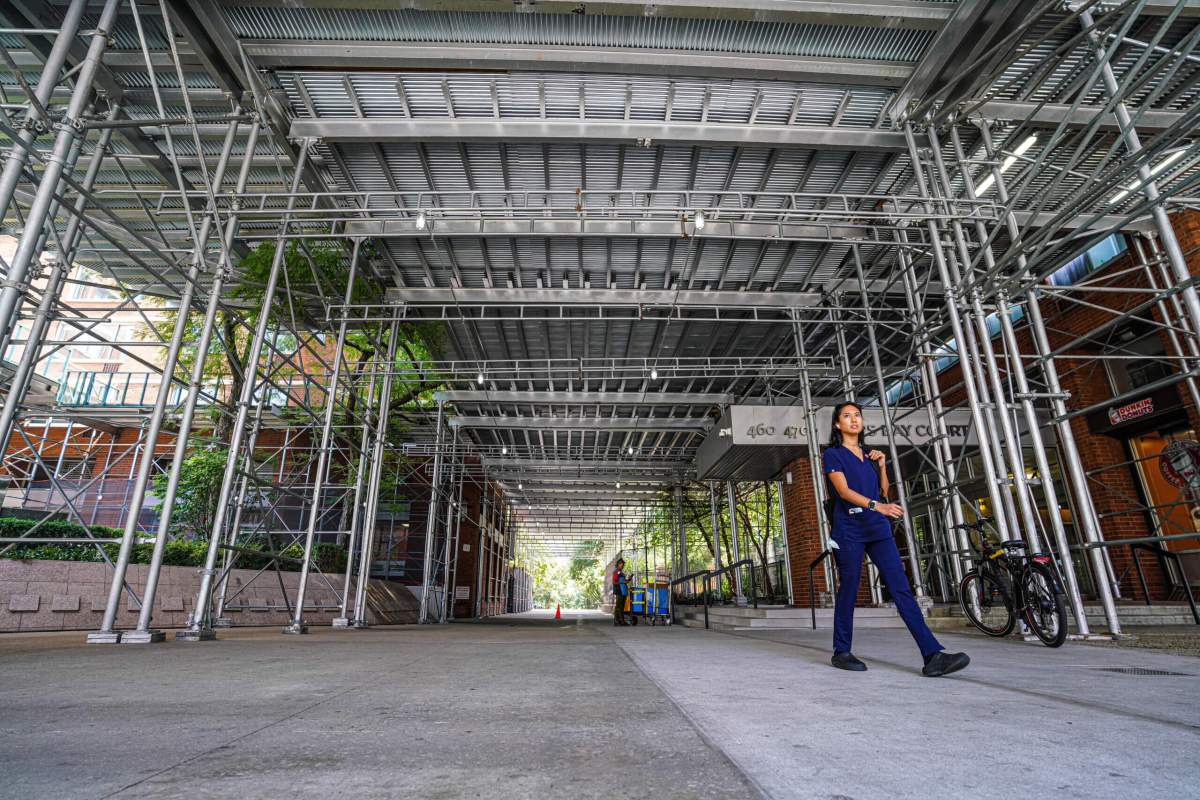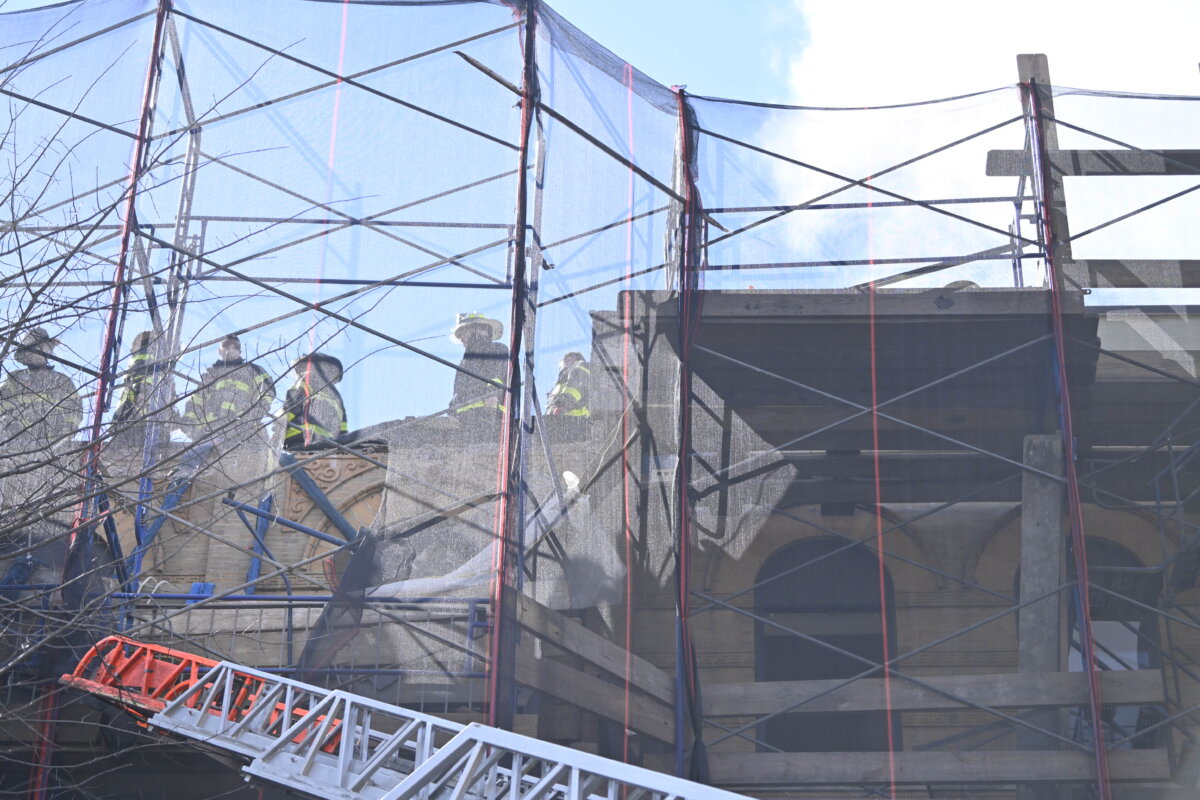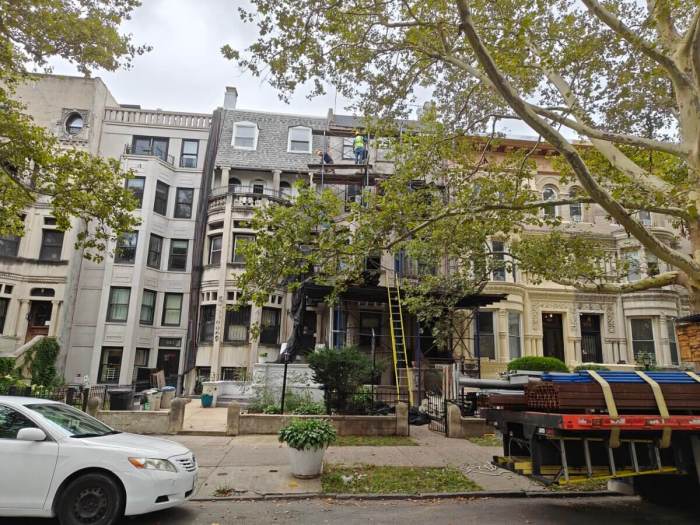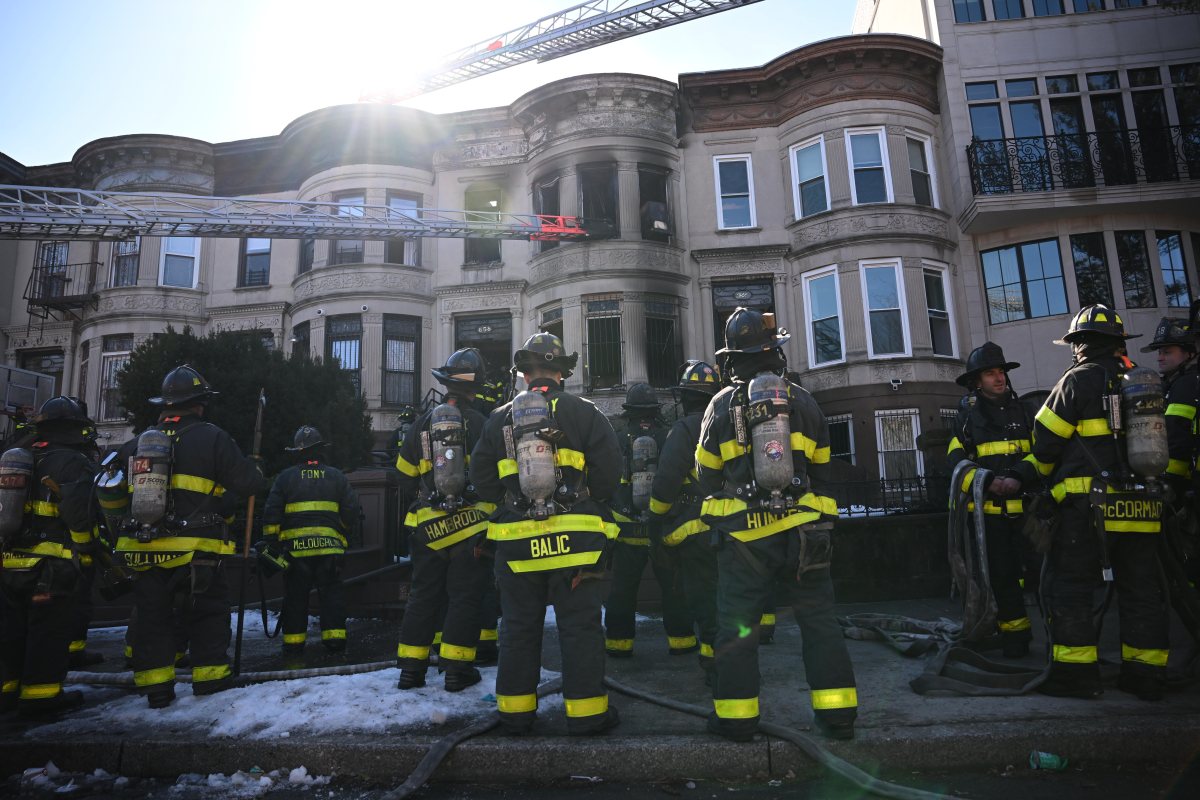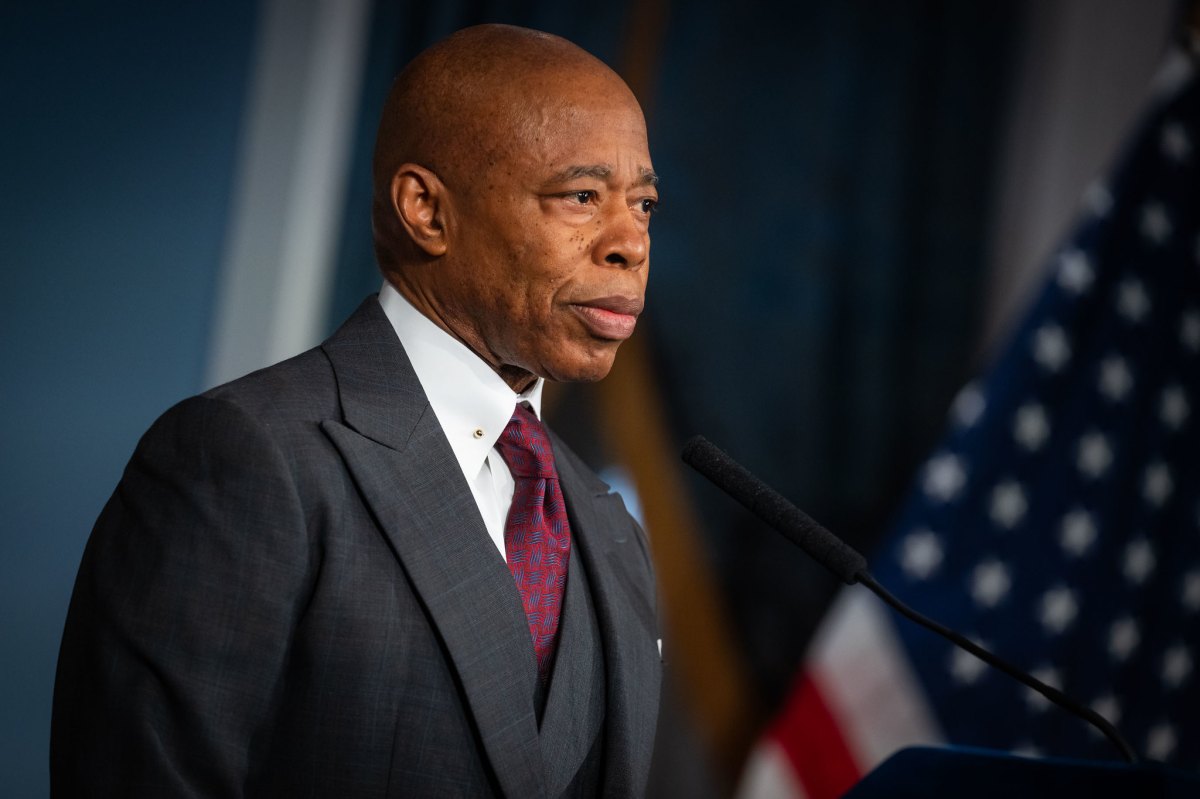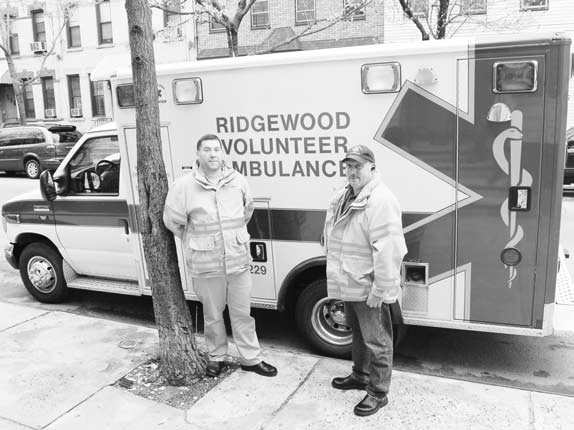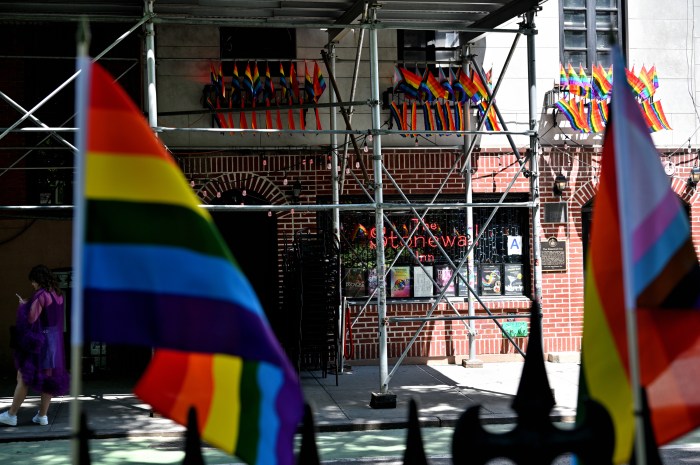Mayor Eric Adams plans to crack down on the scourge of construction sheds and scaffolding littering the city’s sidewalks, as he announced on Monday a new plan to overhaul the rules governing the ubiquitous structures.
Hizzoner, along with Department of Buildings (DOB) Commissioner Jimmy Oddo, announced their “Get Sheds Down” plan at a Manhattan press conference on July 24, which would speed up the process of dismantling the sidewalk sheds, as well as encourage building owners to replace the bulky structures with simpler, less-imposing nets.
“We must show the visual beauty of this city, and it should not be in this skeleton body of these sheds all over our city,” Adams said. “It should not be a way of preventing us from moving forward. The sky’s the limit — and we must see the sky, but our sheds are in a way of doing that.”
The city’s chief executive lamented the prevalence of the more than 9,000 active sidewalk construction sheds, which are often left in place for months at a time — creating an eye sore, as well as a hub for illicit behavior, Adams said.
“Sidewalk sheds, also known as scaffolding, are the ugly green boxes that align our sidewalks. They block the sunlight, keep pedestrians away from businesses and are a magnet for illegal activity,” he said. “New Yorkers have gotten so used to sidewalk sheds that it’s easy to forget our city’s beautiful architecture and we want to make sure that it is not in the way.”
Sidewalk sheds, which New Yorkers have largely come to begrudgingly accept as a fact of ascetic life in New York, are put in place when a building is deemed to have an unsafe façade — and work to protect pedestrians from potential falling debris.
Yet, building owners often opt to simply leave the sheds in place for extended periods of time, rather than remedying the situation that required they be erected in the first place.
The average age of the 9,000 sidewalk sheds currently erect in the Big Apple is nearly 500 days, according to City Hall.
The over-prevalence of those sheds stems back to 1980, when Barnard College student Grace Gold was killed by falling debris from an ill-maintained building — prompting then-Mayor Ed Koch to pass a series of laws still on the books today.
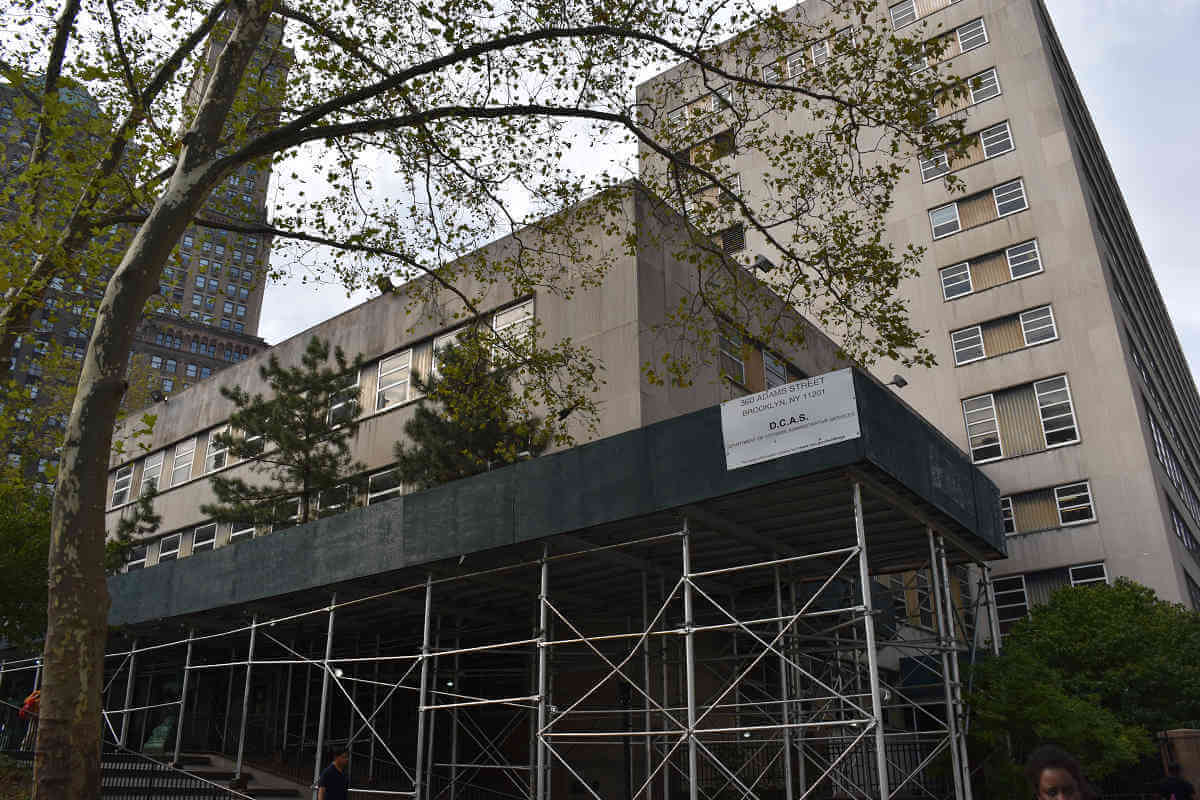
Safety nets, literal and financial
Under Adams’ plan, which will initially focus on four business districts (one in each borough, except Staten Island), city bureaucrats that have typically looked the other way, will embark on an enforcement campaign against property owners who are financially able to foot the bill for repair costs — subjecting them to increasing fines if the sidewalk sheds remain in place for an unjustifiable amount of time.
“We’re going to focus on business districts where property owners have the resources to repair the work,” Adams said. “Let’s be clear, we’re not going to burden our small property owners who are still recovering from the pandemic.”
Meanwhile, the Department of Citywide Administrative Services (DCAS), which manages the logistics behind the upkeep of city property, will launch a pilot program to replace sidewalk sheds with less-intrusive safety nets.
The agency will initially try the method at the Queens County Supreme Court building on Sutphin Boulevard, where sidewalks sheds have surrounded the property for nearly 7 years.
Courthouses are a particular hotspot for sidewalks sheds — such as in Brooklyn, where the prominently-located building on Adams Street has been surrounded by sheds since George W. Bush was president.
If the safety netting proves to be a viable enough alternative, the city will look to expand that proposal — allowing government and private buildings to use the nets instead of metal sheds.
“Don’t let anyone make you believe we must make the forced choice between safety and scenery. We could have them both. This plan will flip the script so that property owners are incentivized to complete safety work and remove sheds,” Adams said.
Read more: Man Critically Stabbed Near Brooklyn Subway Station



